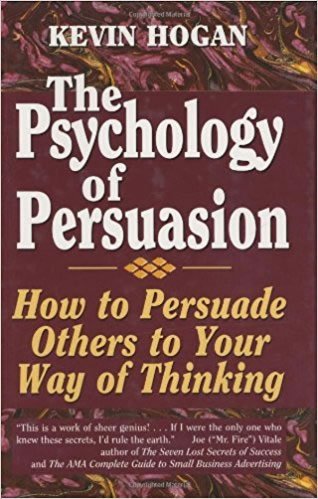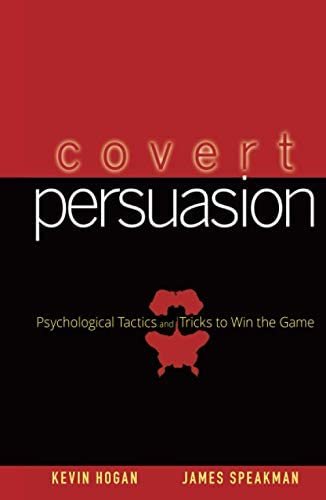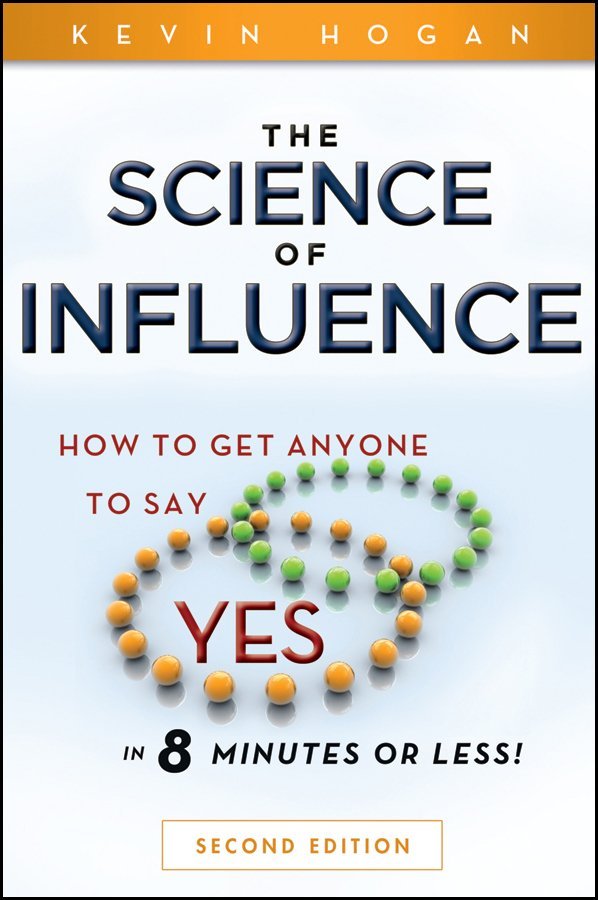
Hypnotic thought is one specific way to reduce resistance, and/or reactance, in another person.
You reduce reactance, work from the potential client’s first heard story of you or your work, then you capture attention, and then you captivate. At this point you have begun the process of marketing and selling, growing a loyal following, one quality person at a time.
Part One of the Series is Hypnotic Captivation Psychology
If you can’t overcome REACTANCE, you AUTOMATICALLY LOSE.
REACTANCE HAPPENS FIRST in your interaction with someone. It happens at OR BEFORE, “hi.”
Shes going to say ‘no’ or worse. She’s armed, she’s leans toward dangerous and some people think you can say, “Hi I’m Bill here from SalesbyBill.com and I’m always closing! I do that because the books I read told me to….Today I’d like to show you why you should do business with me!….”
And now Bill is safely on the ground where he will never close before beginning which comes after eliminating reactance begins.
Game Over.
Legendary Point: Don’t always be closing.
Don’t always be doing ANYTHING except generally being very careful to see things from their frame, meeting them on THEIR LANDSCAPE, reducing and eliminating their REACTANCE, or you are DONE.
Reactance is the defensiveness one experiences when they sense they are being manipulated or losing freedom of some kind, including the freedom of choice.
Resistance is the defensiveness one experiences when asked to agree to or comply to a message.
Of course, not everything that causes reactance & resistance to vanquish is hypnosis.
Here’s a secret, I don’t really like the word “hypnosis” because of all the connotations and weirdness that surround the name. There’s a lot REACTANCE to it!
That said, bypassing the critical factor of the mind, IS the best and most unique definition of hypnosis and that is ONE crucial way to eliminate reactance.
Hypnosis, is not, really, about eyes closing or “going deeper.”
Hypnosis is about opening the door to a person’s mind.
The practitioner of influence uses hypnosis when she utilizes the other person’s imagination, memory or certain aspects of the environment to create a change within another person’s mind. The change could be permanent but more typically it is to open a door and not break it down for permanent removal.

The contrast to hypnotic effectiveness is standard communication where one person attempts to convince another through conventional means, gentle conversation, intense debate, perhaps argument or even coercion.
A critical aspect of dropping both R & R and then preparing for a message to be experienced, occurs with locked attention and then captivation.
Attention and Captivation
How do you know if they are truly captivated? Is it easy to captivate? How do you do it?!
Women and men are captivated by different things.
Women look at a man and they typically begin with his body and then go to his face. I’ve detailed elsewhere in kevinhogan.com the various combinations and times of the differences in what men and women are attracted to. They aren’t critical for this moment.
Now when men look at a woman they look first to her face and then to her body. (That’s the opposite of how women process male objects.)
Before we give you an example of this, check out this 90 second video which is the original Selective Attention Test from 20 years ago. It’s worth your time to do this before reading further down. I promise you will tell all your friends to do this after you have. It’s very shareable.
Participate in a quick experiment with us.
On the next page you’ll see what you notice about a pretty woman.
Briefly look at the image, follow the instructions and then continue.
Continue when you are ready and see how your experience matches that of others.
Observe her as you continue on the next page.

Now before reading on, scroll down so the woman is off your screen for a moment.
Next, simply write down with a pen or pencil what you saw.
Then continue.
Here…
Most all men can tell you precisely what they observe in brief flashes. Dark hair, round glasses, cleavage, all without prompting. With a quick glance most don’t get the pen but do return to the pen given another half second. This experiment was interesting and originally dawned on me because of the gorilla in the “count the number of passes” video we’ve discussed in depth here.
People miss a gorilla walk through people passing basketballs back and forth, but they men catch the glasses in a glance at a woman with these attributes.
Humans are generally surprised by what others do and don’t see. They are also shocked when they are not among other observers, at their own personal experience.
“What pen?” Women ask. They also don’t notice the darkly polished nails, though men typically do. There is a caveat here that goes beyond the scope of the article. Men have to be prompted, “and what color were her nails” as do women.
And how long do men look at the woman. She is an attention getting woman, of that few would disagree.
But captivation?
The average person reporting to us in the personal time experience view comes in at less than 3 seconds. That surprised me and I’ve read and played along every piece of attention research that comes to me.
Almost 3 seconds is not captivation. It is attention.
I think our friend is captivating but from the perspective of science and influence and the science of influence, she captures and briefly holds attention.
Nothing more.
YOU are going to need a lot more than 3.0 seconds of someone’s mind to captivate and then influence.
In the case of the model, what could have caused you to observe her for an extended period?
The model moved in some way. (Image becomes movie, movement. A visual story.)
Surprise. (Anything changes to the image in an unexpected fashion.)
Entropy. (The image begins to fade.)
Other choices are often unpredictable. Movement, surprise, entropy.
That’s how captivation begins.
People pay attention to your message until they don’t…or they are captivated.
At what precise moment do they look away from your message? How do you stop that from occurring?!
The Hypnosis Triggers Made Simple:

They look away when the message lacks entropy. They look away when it lacks surprise or motion.
Now, imagine you are communicating what you hope to be a persuasive message.
You’re hoping for captivation. With captivation they are likely (but not certain) to say, “yes.”
If they respond affirmatively in an almost instantaneous reaction mode, you did done do good. They go home with a brand new whatever it was you were attempting to suggest.
If not, you are dealing with an expert or someone who is not typically driven to impulse by their lack of advanced knowledge. If you got the expert or the non-driven individual, “no,” or something in that ball park is what you hear..
And that is just fine.
Everything in this article today applies to general potent influence but the examples I use are from sales and marketing.
By the way the simple black and white image above gains attention for a similar amount of time as the girl in the image above it, but I suspect the QUALITY of the attention is processed differently by the brain and has a different level of arousal. That said, we haven’t tested for that yet….but we will.
How does beauty resonate with other aspects of captivation…because it isn’t everything, simply instructive, watch…
Turn the page…
Rational Thought in Marketing and Influence?

Okay, now that you’ve had a glimpse of how captivation can begin, let’s move on to…. rational thought. A few weeks ago in Coffee, you learned an important sequence of generalizations:
- Benefits appeal to Drives
- Features appeal to Rational Thought
- Rational Thought justifies Human Drives
- Human Drives… drive Sales
This time write them down.
STUDY THOSE FOUR BULLETS.
Your competitor will and he’ll use those four bullets for all kinds of different end results. On Paper, in a Journal with Ink. Because…
Now it’s time to understand what kind of “rational thought” works best with consumers.
The answer is simple: honesty.
Don’t assume honesty always reduces resistance.
It is not that simple. But, if you desire to be congruent, to get real life results, to be as useful to as many people as possible… be honest.
The expert’s resistance in particular, is reduced with direct, straight forward, flat out, integrity. (Remember, integrity doesn’t hurt with everyone else, either, though every now and then it will surprise you!)
In order to influence your customers, you need to present true, credible facts about your product or service.
These facts will serve as the “rational justification” for the drive-driven purchase.
The New Car

The rational thought-drive driven connection, and the importance of credible facts can best be demonstrated with an example using cars.
The reasons consumers verbalize for their car purchase may be rational in nature. “It’s safer, you’re higher on the road, you can see better,” — but the REAL reason people buy their cars is often quite different.
The majority of people who buy sports cars like Ferrari and Porsche seldom have the opportunity to utilize their car in high-performance mode. (They don’t get to drive fast like they think they will when they buy the car!) And many of the wave of SUV buyers, like me, will never take their vehicle off-road.
So why are these vehicles in such demand?
It’s because they’re perceived as high-end luxury items, the envy of others, and Madison Avenue says owning one of these cars will immediately give you an “in” to all the same places that the ‘beautiful people’ go.
But all these reasons seem shallow…self-serving…self-indulgent… So consumers create a rationalized reason for satisfying an internal drive. The funny thing is that the same rational thinking can justify many, many desire driven purchases.
For example:
Some people want to feel safe, so they want a car that’s reliable. They justify their need for safety with the rationale that a reliable car is a good investment because it will last a long time.
These buyers can be “sold” with government and insurance company auto statistics. They are almost dying to buy from you if you just give them a good enough “reason” they can use to tell the family…
Some drivers are thrill-seekers who want to feel like the NASCAR drivers they identify with.
They self-explain their need for speed with the rationale that a high performance car is a good investment because it will have a high resale value.
Top models know that fashion and cars are often their biggest markets. And top performance vehicles in Europe are rarely separated from top models.
The model’s job is generally not to tell the story (captivate) but to draw attention to the story and trigger the future owner’s drives, not all of which are sex by the way. The sex drive motivates most people but blends with 2 or 3 of the other 15 in a way that it provides the spark for other drives like nesting, eating, physical activity, and independence. The model (the girl not the car) is a tiny piece of the beginning of the story and the automobile drivers LIFESTYLE narrative.

Human Desires WILL be expressed, experienced and met. The sleek lines and curves of automobiles blend seamlessly with lines and curves of the finest of human figures.
Those two things typically appeal to the successful, the driven by desire humans and those high performers tend to be some of the finest minds in the world.
Thus, statistics from luxury car magazines are important facts to these buyers.
But here’s what is more important. The girl in the picture by the sports car serves multiple purposes in marketing.
She can’t sell the car but without what she represents in the mind of the buyer it is very difficult to sell that car.
Here’s how you will brilliantly market and sell with hypnotic captivation. You don’t need a beautiful girl to accomplish this (though never let anyone kid you, she can really help the process). Here’s what you will do, with or without a purple top.
Turn the page…
THE BRILLIANTLY WOVEN NARRATIVE CAPTIVATES
Statistics, and knowing the statistics, SUPPORT THE NARRATIVE in the wealthy buyer’s mind.
There is a similar feel for the cigar aficianado, with lifestyle magazines that continue to sell well in 2020 appealing to the lifestyle of the cigar smoker. I remember the first time I ever saw the magazine in Las Vegas, I almost didn’t believe it. The very idea opened avenues of marketing thoughts I never would have come up with had it not been for seeing a compelling cover which helped me understand what lifestyle MEANS to people.
See one story really isn’t the narrative. The narrative is a sequence of story or story components. You have to have each story move into the next. The narrative is what transports the reader, the listener AWAY from the moment and generally speaking in marketing and selling, ultimately, into the future.
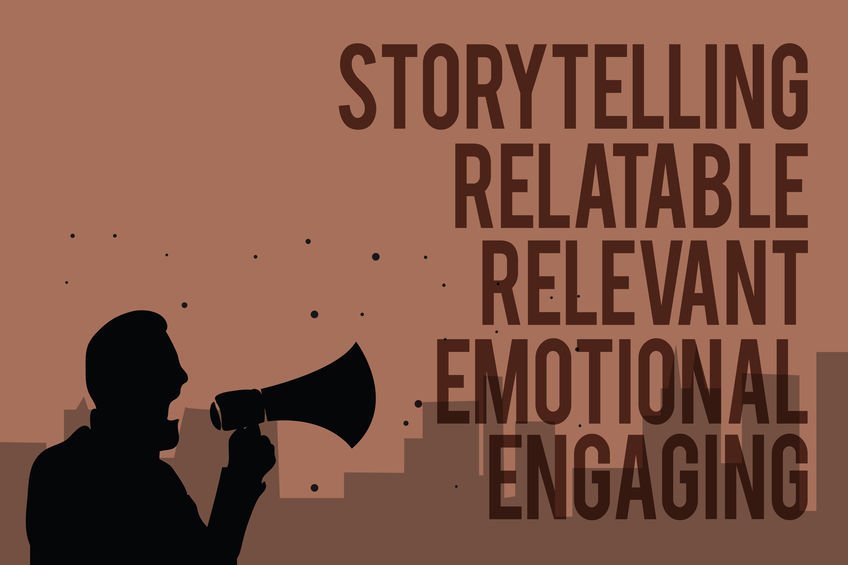
Meanwhile, other high end auto drivers want to feel financially astute or feel success whether they can afford it or not. They justify their need to feel smarter than the next guy with the logic that a car that gets good mileage is a good investment. They’ll be “sold” with facts from sources like Consumer Reports. (People like me.)
Rational thought is the ability to use facts or rules to analyze, consider, plan, strategize, discuss or even make a persuasive argument. So super-salesmanship which is gentle persuasion; is about providing the FACTS to support the desire.
But remember, although there’s certainly a great deal of rational thought to support a consumer’s decision to buy a car or truck, the purchase is actually about fulfilling an internal driver.
NONE of this happens without a narrative that they buyer believes, feels, and is certain is their story.
Simplifying the Hypnosis (bypassing critical thought) of Basic Human “Needs” and Drives
Take a look at the marketing hot buttons that ‘activate’ the desire to fulfill some of these basic human needs.
Generally, when people talk about basic human needs, they’re talking about our most primitive internal drives and needs for food, shelter, clothing, sex.
But that is only the beginning of existence.

In order to captivate once you have attention, you MUST first turn on desire…a core driver…a core need or want.
Here’s how you do that…
The Hypnosis Triggers Made Simple:
We aren’t taught to need these things, the desire for them is hot-wired into our genetics and are responsible for our primary motivation as human beings: to avoid pain and maximize pleasure.
WRITE THIS ABBREVIATED LIST DOWN AND KEEP IT BY YOUR COMPUTER.
If you don’t you’ll forget them in 4 minutes… and you’ll miss out on having what you want in life and helping those that you influence get what they want in life.
No longer primitive, and generally able to satisfy this core of the most basic of needs, contemporary humans are now free to expand their “gotta have it” list to include…
- Security – the need to feel safe
- Adventure – the need for a “rush”
- Freedom – the need for independence and spontaneity
- Exchange – the need to share information and knowledge
- Power – the need to be in a position of authority
- Expansion – the need to build and grow
- Acceptance – the need to be accepted by others
- Community – the need to be around people like ourselves
- Self-Expression – the need to reveal ourselves through speech, actions, dress, etc.
If your presentation or copy can demonstrate that you can meet any of these basic needs…or, better still, that you can satisfy a combination of needs…then selling your product or service is a snap.
It Starts with Fear….
You probably don’t sit around thinking about worst-case health scenarios, but insurance companies do. They use those scenarios and the fear attached to them to shock you into buying a product that you wouldn’t have considered otherwise.
Our fears, whether they’re of illness, loss, or social rejection motivate us to make wise decisions by forcing us to consider negative possibilities —
“Will I die if I don’t follow this diet?”
“Will my business collapse if I don’t purchase this software?”
“Will I be embarrassed if I don’t use this deodorant?”
OK, now it’s your turn before I come back. Here’s your prompt. Write down your best guesses then carry on.
PROMPT: HERE ARE THE BIGGEST 3 FEARS of YOUR- potential buyers, clients, companies, even family and friends; will be triggered by. (Yes, of course, WRITE THEM DOWN, these are your best guesses!)
Then continue to the next page to see how to leverage these fears toward agreement and compliance.
Turn the page now…

There are five or more kinds of consumer ‘fears’ that you can leverage toward “YES.”
- Fear that the status quo will go from good to bad and from bad to worse if he/she doesn’t buy your product.
- Fear that the consumer will be paying more than is necessary unless he/she does business with you.
- Fear of making a mistake in choosing a solution unless it’s YOUR solution.
- Fear of losing out on an opportunity unless they act now and purchase your product.
- Fear of Loss is extremely important in persuasion.
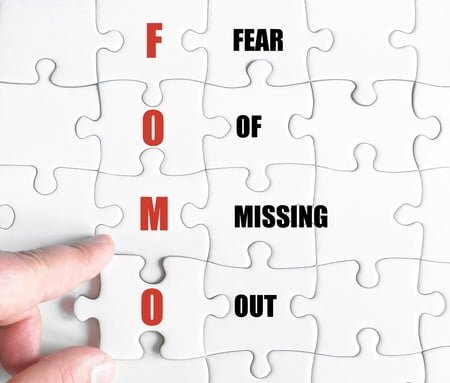
LEGENDARY POINT: When writing your articles, copy, presentations, bear in mind that people respond more to what they are going to lose than to what they are going to gain. “…fear of loss.”
Ask yourself: What will my customers stand to lose if they do not buy my product or service?
When you’ve figured out the answer, you’ve identified a key sales point for your sales letter.
A word of caution: Fear works when an optimal level of fear is evoked. Not too much, not too little, but a level of fear that’s just right. Don’t be dumb. The only place people want to see horror is at the theater.
How do you know what’s optimal? That’s tricky. You need to go to a level of fear that’s strong enough to scare people into action, but not so strong that it makes them so disturbed that they just turn off and stop reading.
And, of course, you should only use fear as a button when it’s clear that there is a way to avoid the feared stimulus as explicitly indicated — and the way to avoid it is with your product.
Be certain that you apportion fear accurately…:
The Hypnosis Triggers Made Simple:
When you buy a product what matters to you?
It depends right?
If you are buying paper you probably don’t care about the integrity of the company. But integrity of the company sure could matter in a lot of other purchases.
Meanwhile, if you are hiring a contractor, the integrity of the company and contractor are likely to matter a great deal to you.
Let’s look at whatever it is you sell or have to influence others to do. Let’s also assume that your customers, clients, friends don’t have any real expertise beyond what is common knowledge.

What most often matters to a consumer are the benefits they will receive from buying a product or service. At some level they want to know how your product X will make their lives easier, how it will make them irresistible to the opposite sex, how it will make them happy or wealthy beyond their wildest dreams.
You don’t really want to say you are amazing in your marketing efforts. Instead, demonstrate the benefits of buying your product or service (or even you) from you, using specific facts and figures. And be certain to let those comments of your (product/service) attributes of the extraordinary to the endorsements and testimonials of others.
Tell your prospect/client in simple, straightforward language how your products or services are better than all the rest.
Your message should be all about them and very little about you.
Everything you say and write arguably should answer the question:
“What is in it for me?”
It’s old, it’s old school. It’s spot on.
Consumers are especially interested in extra incentives, bonuses, and “value-added” packages because when they’re considering a purchase, they’re constantly trying to figure out what they’ll gain.
Thinking about acquisition….

Want a simple way to test whether your copy is “good for the drive to acquire?”
Count the number of “I’s” you have in your text and then compare it to the number of “You’s”. You’ll know in an instant whether you are writing to your prospect..or to your own ego.
If your offer is acquisition-oriented, then words and phrases like “money”; “get rich” ; “six-figures”; and “make money easily” might excite your readers. Ideally you want to use many small, one syllable words that your prospects can relate an emotion to. And remember to be accurate when you describe your product or service.
Pick five or six key words that will stir up “the feeling of greed” and plant them liberally throughout your marketing copy to spark the emotional reaction that’s the catalyst for a sale.
The desire to acquire, no matter what anybody says, is a part of the human psychological make-up. Everybody wants more…especially for less. If your message promises to help the individual get a bigger piece of the pie, and that is what they desire, then it will attract attention and generate sales.
Just remember: The desire to acquire is both necessary and good.
The Power of Curiosity…
The Hypnosis Triggers Made Simple:
 All creatures are curious by nature. Culture and conditioning can reduce the compulsion to be curious but humans are curious beings. Humans explore their world rather than just respond to it, looking under rocks, pulling back curtains, and poking sticks into things.
All creatures are curious by nature. Culture and conditioning can reduce the compulsion to be curious but humans are curious beings. Humans explore their world rather than just respond to it, looking under rocks, pulling back curtains, and poking sticks into things.
To arouse curiosity: The following concepts, exact words are best to be congruent with you and your brand, have been shown to turn apathy into interest:
- Discovered!
- Someone let the secret out…
- The answer you’ve been looking for…
- Sneak Peek
- For Your Eyes Only
For writing copy, the following headlines are laser-focused on the curiosity of their individual target audiences:
- Secrets for Making Money With (fill in the blank)
- What The Diet Companies Don’t Want You To Know
- Mysteries of A Satisfying Sex Life Revealed
- The Professionals-Only Guide to Car Buying
To make curiosity work for you: After you create the “itch” that needs to be scratched, you must then make it absolutely and IMMEDIATELY clear that you provide the solution to the itch.
For example:
There’s a trick to giving up cigarettes for good…
…and the answer is on the next page!
You won’t believe what our supplier did…
…and now YOU can take advantage of her big mistake!
The journey to financial freedom doesn’t have to take forever…
…If you know the short cut that WE finally discovered.
Our passion for discovery is hardwired, so stimulating curiosity is a powerful force that you can use to lure consumers to “go deeper” into your presentation or your copy. Curiosity gains and holds the consumer’s attention long enough for the rest of the sales message to be delivered.
Most people don’t like “advertising” and won’t make the effort to open a solicitation if they think they are getting an advertising message — unless they are sincerely interested in buying something that the advertisement offers…OR if their curiosity is aroused.
Attend an online e-course with Kevin Hogan. Registering now:
Internet Marketing
and Web Wealth
9+ Week E-Course
with Kevin Hogan, Psy.D.
Begins: July 15, 2020 – Pre-register and save!
“Will YOU be the next person to do ‘six figures’ annually on the Internet?”
Create the Lifestyle You Want with Internet Marketing
Scott lives in California but has recorded most of his online video training material in Hawaii. He does it on his own time, in his own way. Probably because it’s his best possible personal lifestyle. Perhaps I’m wrong. Perhaps he’d be doing better somewhere else.
You can do the same thing as Scott and the dozens of other participants who have been using the longest ongoing Internet Marketing Course to help launch profitable projects for people across all industries and fields of work.
Using the same strategies and techniques we’ve used to make a ZERO investment turn into *seven* digits … I’m thinking, you can do it.
I’m not suggesting you’ll do EIGHT digits annually … or even seven. THAT requires a significant amount of work, and maybe even some luck. So let’s stick with more attainable outcomes, at least for now.
Making Money Online
When you want to make money online … you either:
a) pay a lot of money to get people to hear about you, or
b) you cause people to come to you without cost.
I prefer that latter and that is one of the most important variables to your success.
Online marketing is how you make money in life in 2014. People who don’t market online have very little chance of achieving any kind of financial success going forward. When you search for any phrase there are a few people/sites that the search engines consider the most important for you to see. You’re going to learn to be one of those people who end up in the search results.
And that is simply the beginning…
Making Money Online
Using the same strategies and techniques we’ve used to make a ZERO investment turn into *seven* digits … I’m thinking, you can do the same or at least half or a third or a quarter of that …
Do You Want A Systematic Approach?
This E-Course includes a detailed step by step systematic approachto results, so you can SEE HOW to do what you need to do. The delivery of this course is entirely online and all at your convenience.
It’s very different from any online course you’ve heard of and I direct it much differently than anything you’ve ever considered.
There are also comprehensive documents that reveal an almost endless array of what works, why, and how to implement. Perhaps most important is that for all marketing questions you will have, you get complete access to me for mentoring and coaching for 9 weeks.
Because Online Marketing of a new or existing “business” is evolving rapidly, we have JUST FINISHED dramatically updating and upgrading the course for you.
What helps most is that unlike a barrage of home study programs, with our team, you can ask questions that are important to you and your efforts 24/7 for two solid months as we progress step by step, day by day.
Would You Like An Experienced Expert Mentor?
You have a MENTOR. (Actually a few this go ’round!) You get to ask someone who has those seven digits instead of the guy who works for the guy who would like to earn five digits. The difference is critical as should be obvious.
 You have me at your email pleasure for as many hours as I’m awake. That’s most hours … I will answer EVERY question in copious detail so you have 100% understanding.
You have me at your email pleasure for as many hours as I’m awake. That’s most hours … I will answer EVERY question in copious detail so you have 100% understanding.
Question: What is the value of a 9+ week course if it brings in $100,000 in say 2020?
Half?
$30,000?
$20,000?
Well, I’ll tell you what it’s worth to me.
The answer is $10,000.
It’s like a finders fee.
When your website(s) NET revenues total $100,000, that’s when you pay 2/3 of the course tuition. Less than 1/3 of your tuition is paid in advance.
Perhaps you have paid for numerous big Internet Marketing packages.
That’s cool but will you REALLY do IT???!?!?! And even if you did, who would you have someone to communicate with every single day when you need help?
There’s no one there and the research says NO, you won’t use the program. Research says … the probability approaches zero.
You won’t fail because you won’t start.
The System you are going to learn is unlike anything you’ve seen or heard of before.
Is it Time for A Different Approach?
Building wealth on the web requires doing a number of simple things right. It requires doing a few more complicated things fairly well and it requires being able to master ONE of about 20 different marketing tools. That’s it … one.
ONE!
Most Internet Marketers will tell you WHAT you need to know. I will show you HOW to do it and WHY so you can replicate results in the future.
Everything you learn in this experience is 100% for your business.
Your total knowledge of the web/internet/media today doesn’t have to even hit the radar. We walk you through everything, step by step.
For example: If I tell you that you are going to use video on your website … I’ll SHOW YOU HOW TO DO IT in such a way that it works FAST and EASY. I won’t just say, “Oh, video on the website is really helpful …”
I’ll show you how to get video on a website for the world to see. (It’s not 1/10 as hard as you think it might be.)
I’ve learned to do things quickly, effectively and efficiently mostly because I am not tech savvy. I want to simply share with you what works and how to grow a successful online marketing Coffee Table Business.
100 Reasons To Do This Specific Course
Here are just some of the 100 key points reflecting what you will learn:
Note: There is no mandatory schedule you need to follow – you create your own schedule with Kevin to follow for the duration of the course. You WILL have Kevin for the asking via email 24-7.
1) How to get a web name in 2 minutes. (like kevinhogan.net)
2) How to start a website and have it UP in 55 minutes.
3) How to post the website to the Internet in 10 minutes.
4) How to get people to come to the website within 4 HOURS.
 5) How to get the biggest search engines to direct people to you instead of your competitor, for free.
5) How to get the biggest search engines to direct people to you instead of your competitor, for free.
6) Exactly WHAT you need on your website to make your website popular. (Within days.)
7) How to engender love from search engines and develop a “long term relationship” with search engines, so you get more and more traffic your way quickly and for a long, long time.
8) Specific things you can do that will cause search engines to know your site is important enough to push you onto the first page.
9) How to KNOW what to sell on your website(s). Whether to start a Coffee Table Business or use the Internet to make your current business thrive.
10) Choosing products and services to sell.
“Kevin’s Internet Marketing and Web Wealth E-Course was excellent. He gave us LOADS of stuff to learn, and he also personally answered every single question I could throw at him. So now I have all the knowledge needed to successfully market ANY product. There’s no need to guess or wonder what some other guru knows that I don’t know because he gave us everything that actually works!” Jason Lowe, New Zealand |
11) How to make a relatively nice income stream, without having to create a product or service yourself!
12) How to get other people to help you build your empire as quickly as possible. And not just how, but your team will indeed do this with you as you will help them do the same thing.
13) How to create a sales force of people, without cost, to tell the world about you…Try doing that in the brick and mortar world.
14) How to WRITE the copy (advertisements) that will sell the products and services you will earn money from.
15) How to know what to write.
16) Learn all the wrong ways to write that will cause any site to go broke.
17) Learn the EXACT WORDS and PHRASES that the pros use to bring in big numbers every year.
18) How to appeal to a very specific audience so your message doesn’t have to be wasted on people not interested in what you are selling.
19) Learn the art and science of writing copy.
20) Find out what sizes of print and what FONTS and COLORS of type make the most money the fastest.
21) Learn how to test, in just a few DAYS, what is working for YOU and change QUICKLY so there are NO WASTED DAYS in building your business.
22) Learn to do the things that sound complicated that can be SUPER EASY….like picking the right keywords for your website and the products you decide you want people to own.
23) How to let the search engines how you want your stuff to be promoted and referenced.
24) How to gain the trust of the search engines in a changing environment.
25) Search engines are getting smarter but they still don’t read like people. If I want to promote myself as a body language expert, my metatags and keywords might have to read “EXPERT BODY LANGUAGE” and not, “BODY LANGUAGE EXPERT.” I’ll show you how to figure this out in SECONDS.
“Kevin, I want to thank you for your Internet Marketing E-Course, as I was able to write a book (me! I wrote a book!) with the information you gave. I was a bit of a silent partner as I didn’t talk, email or respond with the group much, but I have learned a great deal and this course has been invaluable to me and my business. Thank you!” Betty Eastman, LCSW |
26) Find out how to get other people to help you build your business…even your competitors. (REALLY) So all that you do every day…it’s all done so you are in total control of your own income.
27) How to get people to buy products you release today….today…yes…you make it, produce it and release it today…and it sells TODAY and it sells A LOT.
28) How to write an ad for that product that will actually work. (If you have written an ad before and discovered it failed miserably you know that almost ALL ads fail.)
29) How to develop LOYAL customers.
30) There is NOTHING more important in web marketing than using email or better, an “E-zine.” I’ll show you how to write your own Coffee with Kevin Hogan and have people caffeine CRAVING IT every week.
31) I’ll share with you the biggest risk I ever took in Internet Marketing. It has to do with Coffee with Kevin Hogan and it paid off like the lottery. NO ONE ELSE does this who has an e-zine. I’ll show you what it is and how I did it.
32) You’ll see specifically and in a step by step fashion, just how to get your e-zine DELIVERED into the email boxes around the world so it isn’t filtered as spam.
33) I’ll show you step by step how to develop LOYAL readers where everyone else just has their e-zine read rarely and often by accident.
34) You’ll learn whether or not you should promote specific products and services through your e-zine when you are approached.
35) People talk about their “lists” of one million people. Let me tell you that number means diddly. If you are on a LIST you are NEXT IN LINE at the hotel. I have READERS. People who want to read Coffee as much as they want to read Cosmo, Maxim or The Wall Street Journal. The difference between a LIST and YOUR READERS is ENORMOUS. I’ll show you EXACTLY how to have people KNOW they are important to you.
“Kevin, the Internet Marketing Course was great! I highly recommend Kevin Hogan’s web marketing and Internet E-Course to anyone who is serious about learning and implementing the nuts and bolts of having a profitable online business. Hogan without a doubt over-delivers on the information he provides. This course was well worth the price and way more. Again, if you are looking to learn and grow your Internet business, this course is for you. Whether you are a beginner or advanced, I highly recommend it.” Michael Roth, DC,www.rothwellnesscenter.com |
36) I’ll show you how to develop a relationship with your readers, no matter how many your have…so that when you take a week off and your E-zine doesn’t show up in their mailbox, they are screaming at you and telling you they miss you!!!
37) You’ll learn EXACTLY the formula I have discovered for success using an E-zine in conjunction with your work.
38) I’ll show you how to get articles for your E-zine if you can’t write them all yourself. (Free articles that are surprisingly good.)
39) I’ll show you how to get the biggest names in your field to contribute articles to your fledgling E-zine.
40) FACT: The E-zine is the SINGLE MOST IMPORTANT PIECE of the Web Wealth puzzle. I’ll show you why and how to make sure nothing ever goes wrong.
41) I ‘ll show you EVERY secret I have learned about E-zines that will make you a LOT of money.
42) I will walk you through STEP BY STEP how I write Coffee with Kevin Hogan every week. Not so it’s the fastest, or easiest but so it’s the BEST.
43) How many OTHER E-zines do you read other than Coffee with Kevin Hogan? I get hundreds in my mail box every week. I read 7. That’s it. I’ll show you those seven and why I like them and why they are as profitable or MORE PROFITABLE than Coffee. Almost all E-zines are TERRIBLE. 99% is not a big enough number. People do NOT GET WHAT AN E-ZINE NEEDS TO DO. You will.
44) You will find out how to decide whether you should have a full color e-zine or a simple text e-zine. There is an EASY ANSWER for YOU and there are only THREE VARIABLES. But if you make the wrong decision, you go broke.
45) I’ll show you how to write a SUBJECT LINE. NOTHING IN YOUR ENTIRE BUSINESS IS MORE IMPORTANT THAN THE SUBJECT LINE OF YOUR E-ZINE each week. Not your product quality, not your website, not YOU, NOTHING. I will show you successful subject lines and then I’ll grab subject lines from my email box and show you what other people are doing that is wasting their time and their life.
46) I’ll show you how to make extra money once per month in your e-zine with an idea very few have ever thought of.
47) I’ll show you how to get your first 5,000 READERS as quickly as possible and compare them with the first 100,000 people on anyones list and show you why YOU WILL MAKE FAR MORE MONEY being valuable to your 5,000.
48) I’ll show you REAL SECRETS that will help you use your E-ZINE to boost web traffic to your website that NO ONE ELSE IS DOING RIGHT NOW. (They will be after they take the course.)
49) I’ll show you what NOT TO PUT IN YOUR E-ZINE so you save yourself legal problems.
50) I’ll show you what is necessary to make your e-zine 100% deliverable.
“You have created a ‘cookie cutter’ plan to wealth via the internet with this course, all the participants must do is follow the directions, amazingly easy, thank you.” Michael Neumann, Tikrit, Iraq |
50 More Reasons To Do This Course…
51) I will show you benefits and drawbacks of software programs that can help your business….or not. (Including email programs, linking programs, website enhancement programs, etc.)
52) I’ll tell you THREE PIECES OF SOFTWARE YOU NEED TO optimize income.
53) I’ll tell you the secret of WHY I still have an AOL account and use it A LOT in my business…and how much money it makes me because of it.
54) I’ll show you how to make your website an EXTENSION OF YOU. I will step by step take you through a process that will, if you choose, make YOU a celebrity and your website almost a part of your persona.
55) I’ll show you how your website should read and look so they feel you are there with them when they are at your site.
56) I’ll show you how to make money….a lot of it…while you sleep…for real…
57) I’ll show you how to take credit cards….without spending thousands!
58) I’ll show you how to determine WHICH company to use and WHY.
59) I’ll show you how to select a company to host your store (if you are going to have one).
60) I’ll show you why I took the time and started FIVE blogs. (I don’t even LIKE THEM…but you need to have them…and I’ll show you how to do it all for free and make money on the process!)
61) What do the Kardashians do to stay on top of Celebrity Ratings every week? I’ll show you and show you hot to do it…for you.
62) I’ll show you how I know before ANYONE what is going to be hot this year in web and internet technology. You will be shocked but almost NO ONE outside of the adult entertainment business knows this secret….and now you will.
63) I will tell you the REAL RESOURCES on the web for making money, who knows there stuff, who is full of hot air and who you need to be watching.
64) I will give you a simple formula to balance time for your family and friends and time for your business. That means giving up profits somewhere ….sometimes… but not forever. This module alone is worth the world to me.
65) I’m going to TAKE YOU BY THE HAND and WALK YOU IN MICROSTEPS to start your INTERNET BUSINESS in less than 72 hours.
66) You will learn how to build a website for less than $90. And it will be profitable FAST.
 67) If you aren’t selling yourself (and even if you are) I’m going to show you how to find the top 20 HOTTEST selling products on the ENTIRE WEB and how you can be selling them on DAY ONE you are up and online. (Read that again.)
67) If you aren’t selling yourself (and even if you are) I’m going to show you how to find the top 20 HOTTEST selling products on the ENTIRE WEB and how you can be selling them on DAY ONE you are up and online. (Read that again.)
68) I’m going to show you how you can either partially or FULLY automate your website, depending on the purpose of the site…so you can spend time sleeping, eating and with the kids or your girlfriend.
69) Not everyone can be Page #1 in the search engine returns, but I’ll show you how I got there for a lot of keywords and how important it is that you do what I tell you so YOU ARE TOO!
70) You’ll learn how to get THOUSANDS of QUALIFIED visitors to your site for FREE.
There are so many people like you and me that are making a fortune on the web. Most people I know on the web make far more than a neurosurgeon and our incomes make pilots and some sports stars blush.
71) You can be ON THE BEACH and making money under the cabana or umbrella.
72) You can do what needs to be done daily from ANYWHERE on this planet and occasionally on the airplane! You have a business without rent, walls or doors.
73) You will learn how to make “digital” products and “e-books” so fast it will make your head swim (in dollars or euro’s).
74) I’ll show you how to write a GOOD EBOOK in a FEW WEEKS. Not some piece of junk as 96% are…but a GOOD EBOOK that is VALUABLE to your customer…and that they will happily pay $47 for….and you have ZERO COST.
75) I’ll show you how to create hard products for sale in less than a month. (I could show you a bunch of junky ways to get stuff done in two weeks at first but let’s do it right!)
“I recently took your Internet Marketing Course and I was ‘blown away’ by the content and quality of the course. It exceeded my wildest expectations. I was more than pleased. I have recommended your course to many business associates and would encourage anyone who wants to ‘master’ the Internet to take your course. I am still amazed at the content and deliverables you provided! Job well done!” Steven Chambers, stevechambers.com |
76) You’ll learn how to sell OTHER peoples products and services and not have to ship anything…not take a credit card…and have no customer service and still get paid HALF of the sale!!!!….
77) I have pages on my website that people stay for 4,5, and 6 MINUTES. This is unheard of on the Internet. The longer people stay, the more likely they are to buy. I will show you ALL of my secrets!
78) You’re going to know how to build your opt in list of subscribers without having ANY traffic to your website at all!!!!!!!!!!!!!!!!!!!!!
79) Think you can’t make sales? I’ll show you the best technique on the planet, especially when you are NEW with the product or new in business.
80) I’ll show you the facts behind whether you should take Pay Pal and other forms of money transfer. I’ll tell you the costs, risks and rewards involved!
81) Should you offer a money guarantee? Sometimes YES and sometimes NO. I’ll show you EXACTLY how to know WHEN to do WHICH.
82) You’ll learn how to advertise your business for free…in hundreds and THOUSANDS of places on the web.
83) I’ll show you how to take advantage of amazon.com’s amazing ranking on google to help build YOUR business.
84) You’ll learn how to talk to the best affiliates in the world and convince them to sell YOUR products.
85) Want to know how to use Google AdSense and Google Ad Words? These hot commodities can make you or break the bank. I’ll show you what to do and HOW.
86) I will show you EXACTLY how to outsource to get people to work for you so you don’t have to. YOU DON’T HAVE TO KNOW IT ALL!!! (or do it all either!)
87) Increase your profits by leveraging the work of others in emerging countries like Romania.
88) Learn how to make the most possible money with what you have by EASY testing and tracking.
89) Learn how to use SIMPLE email strategies to put a system of income generation on literal automatic pilot. (LITERAL)
90) Email marketing isn’t just an E-zine. There’s more that can be done to turn big profits!
10 More Reasons To Do This Course!
91) I will show you how to CONVERT visitors INTO CUSTOMERS. This is the crucial step in Internet marketing that no one talks about, because it’s the most difficult. I’ll show you how!
92) Learn the key strategies to get FREE traffic. I had almost 1000 people become Coffee with Kevin Hogan readers LAST WEEK. Not people on a list…we filtered OUT almost 9,000 people! NO. I’m talking READERS. You need to learn how to do this.
93) Learn the lead generation strategies of the pros!
94) Linking has NEVER been more important than NOW. 10 links from your friends aren’t likely to be anywhere near as valuable as ONE LINK from kevinhogan.com. You need to know WHO to link to. I’ll show you how to find out and WHAT TO DO TO GET THOSE CRUCIAL LINKS.
95) I’ll take you through step by step the FREE process I use to get my page one rankings!
96) I’m not going to say you need a marketing empire. but if you want it, I’ll show you how to do it!
97) Pay Per Click is growing FAST on Facebook and it’s bigger than Google. MUCH BIGGER. I’ll show you what to do and how NOT to get ripped off for everything including your shirt.
98) Learn how to advertise with the web and OTHER PEOPLE’S EMAIL … yes … for free and better than that: PROFITABLY.
99) Learn in such a way that IS EASY, NONTECHNICAL, NOTHING COMPLICATED IN ANY WAY. I EXPLAIN EVERYTHING which means it’s got to be SIMPLE.
100) Ask any question at any time during the 9-week course…and you WILL have your answers!
“The most remarkable thing about doing Kevin Hogan’s Internet Marketing Course was one week after we started, I had a website up and running! This is not the usual type of course where you receive all the subject matter and it sits on your shelf until you find the time for it, oh, no! Kevin is involved. Every day he send you emails with attachments. He takes you step by step through the process, especially in the beginning when you really need it. It’s in your best interest to keep up with the group, and whatever questions you have, he answers them all. You will receive absolutely everything you need to know about the Internet. Something else that would never have happened without Kevin, is that my website was spidered by Google 4 days after it was published, and Google still comes by every 3 or 4 days like clockwork. A month later, my site had a page ranking of three. For a newcomer going it alone, this is unheard of. The course was worth every penny. I highly recommend it to anyone interested in setting up an Internet company, big or small.” Sharon Dell, Durban, South Africa |
Apply below NOW or continue reading …
Every day I look at beautiful websites designed by creative geniuses that do absolutely nothing in net profits. (notice that word “NET”)
Beautiful Web Sites Don’t Sell
And I see websites that I can instantly tell you ARE making money. I’ll show you how to instantly make this identification. They look like they were designed by one of my kids … which is one of the ways you know … they will do well.
There are lots of programs that show you how to build a website. (This is no longer complicated. I’ll show you how to build a website by typing as if you were typing any other document on your computer.)
Problem is having a website does you nothing if you have nothing to sell…or if you don’t know how to write in such a way that it compels your reader to trust you and buy from you … or if you don’t know how to GET PEOPLE TO YOUR WEBSITE … or if you … get the idea?
There are lots of programs that address any part of the factors in building wealth on the web. I own a bunch and I’ve learned a lot over the years. But NO ONE has put together the COMPREHENSIVE PROGRAM.
And of course when my mentor says, “Kevin, you need to put an E-Course out there that shows people how to do EVERYTHING involved in making a successful web business. Not just one aspect … and it has to be simple, fast and really work.”
And even I felt overwhelmed … and it takes a lot to get me overwhelmed.
I mean that’s like saying, “Show people how to build a city, make it easy, simple, something that will generate more participants in the future from viral marketing and that will not take every second of your life …”
No problem.
But because all of this is fun and there is actually no part of making money on the web that can’t be done by literally anyone with a 5th grade education … then it should be relatively do-able …
I hoped.
And it turned out it was.
If you think of a sport like football, basketball or baseball….you know that if you take out any one player…and play one man short … you are going to get creamed.
And that’s ultimately what web marketing comes down to.
There are lots of nuances that the experts and internet marketing scientists figure out and I LOVE to learn that stuff. BUT the fact is that the big pieces of the pie are far more important than the nuances in this game.
In fact, you can be an expert at say, getting traffic to your site … but if you have stuff that no one will look at for whatever reason … you make zero dollars. I don’t care if you can double that traffic. It doesn’t matter.
You MUST have ALL the pieces in place before you even CONSIDER working on the nuances.
As I look back at what I’ve accomplished on the Web, I know that it wasn’t the awesome website or the beautifully packaged program or the powerful search engine optimization (and yes, you want to evolve beyond basics) BUT it was the INCREDIBLE, UNIQUE CONTENT and having ALL the pieces in place … all the pieces of the puzzle operating competently that caused millions of dollars of business.
Everyday I learn something new but those things alone would never have gotten me where I am.
That required putting together a SYSTEM. And people need systems.
In this program I’ll take you to my original website. It wasn’t kevinhogan.com back in those days.
I’m going to show you exactly why good things happened. THE SYSTEM was in place. The technology was terrible, the design was not impressive, the programs had inexpensive designs.
THE SYSTEM was in place.
And what I’ve done is modeled what I’ve done and put it out there for you.
I’ve helped a number of other people put their business into the system. They seem to have done alright. Many have far outperformed what I’ve done. (Not even a question actually …)
I want you to LEARN THE SYSTEM.
THEN go and learn all the nuances and stay current in what is working in copywriting, promotional content, search engine optimization nuances.
THE SYSTEM: If you work the system it’s likely you will do six figures annually. How many of those six figures you do is up to you.
Unlike what some people tell you, it does take effort. In fact, anyone who says it doesn’t is kidding you. (There’s other ways to say this and be less polite …)
Effort IS required because it is a competitive arena.
BUT, I’ve never met ANYONE with basic education and knowledge that couldn’t do this easily.
I’m literally going to walk you through step by step as to what to do.
If you have taken my course on Professional Speaking or How to Write, Publish and Sell Your Book, you know that this is where my work may be more helpful than anyone’s out there.
I don’t leave out important steps and make you buy that product later. (Not that anyone would do such a thing …)
You’re going to learn it all and learn how to do it the only real way it’s going to predictably work.
And, just like one sentence in a contract as a speaker for a convention can cost or earn you an extra $20,000..and just like a similar sentence in a book contract is almost guaranteed to cost you at least $15,000 in royalties…I’m going to show you all the crucial elements of making the Internet work for you.
The only time I will get into nuances is when they are SIGNIFICANT to your SUCCESS.
THEN you will plod with me through some lengthier projects. Like writing copy. (An ad.)
Writing an ad is something that doesn’t come intuitively. Perhaps 1 in 10,000 people in business can actually write an ad. Perhaps 1 in 100 people in advertising can write an ad.
 I’m going to show you how to write an ad…what is known as a “Sales Letter.”
I’m going to show you how to write an ad…what is known as a “Sales Letter.”
I’m going to show you how to write a PROFITABLE ad.
And I’ll show you a dozen or so ways to spot an ad that won’t work.
And I’ve got plenty in my archives of things I tried and failed back in the late 1990’s.
Everyone has a learning curve. I learn fast but boy learning can be painful.
My role here is to take the five or ten years of learning pain and reduce it down into two months.
EVERYONE who learns how to make real money in business of any kind either suffers pain over the long term or if they are very lucky…only during the learning period. For you, we will move FAST.
I’m going to show you WHAT to put on your website.
I’m going to show you HOW to put it on your website.
I’m going to show you EXACTLY how to KNOW if it’s working or not.
There are no, “I wonder what I should do’s” in this course.
You are going to tell me up front if you have something specific you want to make money with. Maybe promoting yourself, your practice, your services or your products.
Or, if you want to sell other people’s stuff ….
THEN we’re going to put together THE PLAN.
It takes about 4 hours to do this. IT IS WORK. IF you won’t do this, do NOT sign up for this course. Spare me the irritation.
I will make suggested alterations in your plan. Then it will be in stone (for awhile).
Then…forgive me, but I’m going to TELL YOU WHAT TO DO, and you need to listen. (OUCH)
If that scares you … thank goodness … you are a normal human being. It took me a LONG TIME to just listen to my mentor.
“Kevin, you are going to design the most comprehensive E-Course on Professional Speaking out there.”
“You gotta be kidding?”
And then I did it. Period. There’s no time to dink around. Time is money. Time is love. To waste or abuse time is not in my nature. It won’t be in yours either.
“As a complete self-confessed Internet amateur I started the Internet Marketing & Wealth Building Course both excited and challenged. Well, all my expectations were surpassed and then some. The information and knowledge has allowed me to feel and be ahead of the game when it comes to working via the web for business and wealth creation. Kevin was more than just a mentor, he was my motivator and friend. Throughout the course, Kevin was always ready and available to help and assist. His material invites you the student to create and explore wherever you are in business so that you achieve and go beyond yourself. Kevin has been the invisible force and drive which moved me to take action TODAY!” David Power, Clinical Hypnotherapist, London |
And that is the great thing about building wealth on the web.
It’s all done from home.
It’s all done so you see your kids in the morning and when they come home from school. Commuting costs are whatever it costs you to get out of bed in the morning … to the computer … The weather doesn’t matter because your business is International. Doesn’t matter if the car doesn’t start or if you get fired from your job.
Do Business Across the Web, Across the World
In fact, one of the things I’ve done very nicely with is understanding the people of the world and developing relationships internationally…both in person and on the web.
These relationships are mutually profitable. I have an affiliate (an affiliate is someone who sends me customers and I pay him to do so) in Romania. The funny thing is that even though he’s in Romania, most of the business he sends my way is from here in the United States.
That’s what makes the web cool. Someone can make M in Romania by having someone click on a link on his website and buying a program at mine. That kind of capitalism continues to change the world.
There are no borders. Your world doesn’t know prejudice.
It’s pretty nice for people to wait until you put out your next program and then when they do, they swoosh down and get it because they know it’s going to be even better than what you did before.
I’m grateful and appreciative, and so are they.
Hey go look at a website … any website that sells stuff.
Look for a testimonial that is signed “Cindy W.” or “John L.”
They aren’t real. I mean … Cindy W. doesn’t exist. Neither does John.
It’s a sad statement that the person can’t even get a friend to say something nice about their services. That’s not going to ever happen with you. And yes, I’ll show you precisely how to ensure that.
 Go to KevinHogan.com see what hundreds of average and real unsolicited testimonials look like. Every person whose name is there is above the town, state or country. Where possible we have put a link to their website so all of our customers can see these people’s businesses.
Go to KevinHogan.com see what hundreds of average and real unsolicited testimonials look like. Every person whose name is there is above the town, state or country. Where possible we have put a link to their website so all of our customers can see these people’s businesses.
There are people from the world’s biggest and best companies, finest people and representatives of governments and law.
You are going to find out how to develop a business where people will want to do and say such good things for you and too you….spontaneously… You’re going to do the same.
Integrity makes Money.
Circle that.
INTEGRITY MAKES MONEY.
Have that integrity? Apply now!
You can Apply now and save!
How does your tuition schedule work? Your tuition is divided into two parts. The total tuition comes to $10,000. $2,997 is your commitment today. When you have taken home $100,000 in sales then you can take care of the balance!
There is an installment plan broken down into 6 small payments for the initial tuition payment.
BUT, there is no installment plan once you’ve done your $100,000 in profits in your online business.
Apply Now for the Internet Marketing E-Course


